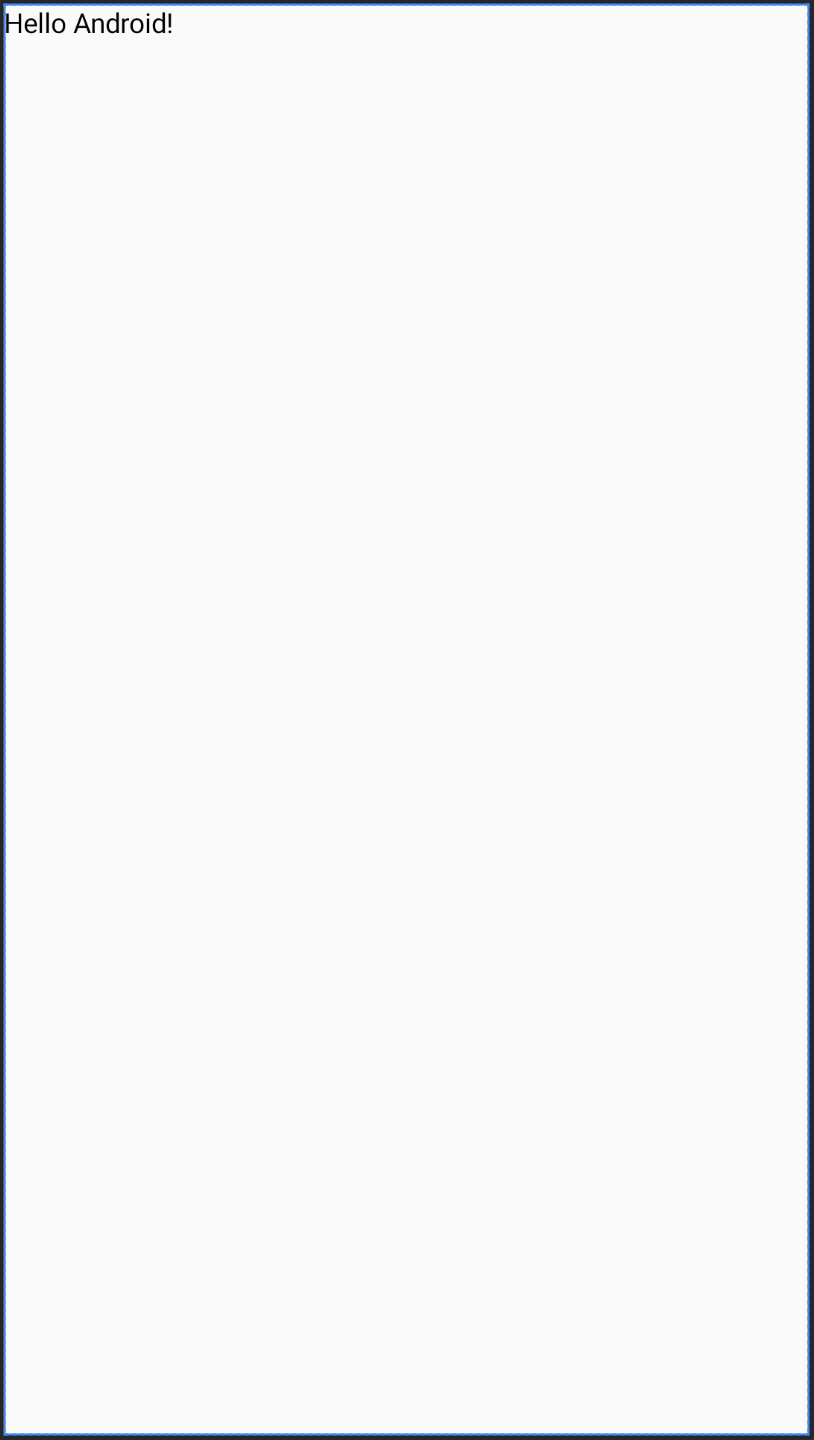ビューベースの設計を使用している既存のアプリに Compose ベースの UI を追加できます。
完全に Compose をベースとした画面を新たに作成するには、アクティビティで setContent() メソッドを呼び出し、任意のコンポーズ可能な関数を渡します。
class ExampleActivity : ComponentActivity() { override fun onCreate(savedInstanceState: Bundle?) { super.onCreate(savedInstanceState) setContent { // In here, we can call composables! MaterialTheme { Greeting(name = "compose") } } } } @Composable fun Greeting(name: String) { Text(text = "Hello $name!") }
このコードは、Compose のみのアプリで見られるコードに似ています。
ViewCompositionStrategy(ComposeView)
ViewCompositionStrategy は、コンポジションを破棄するタイミングを定義します。デフォルトの ViewCompositionStrategy.Default は、基盤となる ComposeView がウィンドウからデタッチされると、Composition を破棄します。ただし、RecyclerView などのプール コンテナの一部である場合は除きます。単一アクティビティの Compose 専用アプリでは、このデフォルトの動作が望ましいものですが、コードベースに Compose を段階的に追加している場合は、この動作によって一部のシナリオで状態が失われる可能性があります。
ViewCompositionStrategy を変更するには、setViewCompositionStrategy() メソッドを呼び出して別の戦略を指定します。
次の表に、ViewCompositionStrategy を使用できるさまざまなシナリオをまとめます。
ViewCompositionStrategy |
説明と相互運用シナリオ |
|---|---|
DisposeOnDetachedFromWindow |
基盤となる ComposeView がウィンドウから切り離されると、Composition は破棄されます。DisposeOnDetachedFromWindowOrReleasedFromPool に置き換えられました。相互運用シナリオ: * ComposeView がビュー階層内の唯一の要素であるか、ビューと Compose の混合画面のコンテキスト内にあるか(フラグメント内ではないか)。 |
DisposeOnDetachedFromWindowOrReleasedFromPool(デフォルト) |
DisposeOnDetachedFromWindow と同様に、Composition が RecyclerView などのプーリング コンテナにない場合。プーリング コンテナ内にある場合は、プーリング コンテナ自体がウィンドウから切り離されるか、アイテムが破棄される(プールが満杯になったときなど)と破棄されます。相互運用シナリオ: * ComposeView View 階層内の唯一の要素であるか、View と Compose の混合画面のコンテキスト内にあるか(フラグメント内ではない)。* RecyclerView などのプーリング コンテナのアイテムとしての ComposeView。 |
DisposeOnLifecycleDestroyed |
指定された Lifecycle が破棄されると、Composition は破棄されます。相互運用シナリオ * フラグメントのビュー内の ComposeView。 |
DisposeOnViewTreeLifecycleDestroyed |
Composition は、View がアタッチされている次のウィンドウの ViewTreeLifecycleOwner.get によって返された LifecycleOwner が所有する Lifecycle が破棄されると、破棄されます。相互運用シナリオ: * フラグメントの View の ComposeView。* Lifecycle がまだ不明な View の ComposeView。 |
フラグメント内の ComposeView
Compose UI コンテンツをフラグメントまたは既存の View レイアウトに組み込む場合は、ComposeView を使用し、その setContent() メソッドを呼び出します。ComposeView は Android View です。
ComposeView は、他の View と同じように XML レイアウトに追加できます。
<LinearLayout xmlns:android="http://schemas.android.com/apk/res/android" android:orientation="vertical" android:layout_width="match_parent" android:layout_height="match_parent"> <TextView android:id="@+id/text" android:layout_width="wrap_content" android:layout_height="wrap_content" /> <androidx.compose.ui.platform.ComposeView android:id="@+id/compose_view" android:layout_width="match_parent" android:layout_height="match_parent" /> </LinearLayout>
Kotlin ソースコードでは、XML で定義されたレイアウト リソースからレイアウトをインフレートします。次に、XML ID を使用して ComposeView を取得し、ホスト View に最適な Composition 戦略を設定して、Compose を使用するために setContent() を呼び出します。
class ExampleFragmentXml : Fragment() { override fun onCreateView( inflater: LayoutInflater, container: ViewGroup?, savedInstanceState: Bundle? ): View { val view = inflater.inflate(R.layout.fragment_example, container, false) val composeView = view.findViewById<ComposeView>(R.id.compose_view) composeView.apply { // Dispose of the Composition when the view's LifecycleOwner // is destroyed setViewCompositionStrategy(ViewCompositionStrategy.DisposeOnViewTreeLifecycleDestroyed) setContent { // In Compose world MaterialTheme { Text("Hello Compose!") } } } return view } }
または、ビュー バインディングを使用して、XML レイアウト ファイル用に生成されたバインディング クラスを参照することで、ComposeView への参照を取得することもできます。
class ExampleFragment : Fragment() { private var _binding: FragmentExampleBinding? = null // This property is only valid between onCreateView and onDestroyView. private val binding get() = _binding!! override fun onCreateView( inflater: LayoutInflater, container: ViewGroup?, savedInstanceState: Bundle? ): View { _binding = FragmentExampleBinding.inflate(inflater, container, false) val view = binding.root binding.composeView.apply { // Dispose of the Composition when the view's LifecycleOwner // is destroyed setViewCompositionStrategy(ViewCompositionStrategy.DisposeOnViewTreeLifecycleDestroyed) setContent { // In Compose world MaterialTheme { Text("Hello Compose!") } } } return view } override fun onDestroyView() { super.onDestroyView() _binding = null } }

図 1. View UI 階層に Compose 要素を追加するコードの出力を示しています。「Hello Android!」のテキストは TextView ウィジェットで表示されます。「Hello Compose!」のテキストは Compose テキスト要素で表示されます。
また、全画面が Compose で作成されている場合、ComposeView をフラグメントに直接含めることもできます。これにより、XML レイアウト ファイル全体の使用を避けることができます。
class ExampleFragmentNoXml : Fragment() { override fun onCreateView( inflater: LayoutInflater, container: ViewGroup?, savedInstanceState: Bundle? ): View { return ComposeView(requireContext()).apply { // Dispose of the Composition when the view's LifecycleOwner // is destroyed setViewCompositionStrategy(ViewCompositionStrategy.DisposeOnViewTreeLifecycleDestroyed) setContent { MaterialTheme { // In Compose world Text("Hello Compose!") } } } } }
同じレイアウト内の複数の ComposeView インスタンス
同じレイアウトに複数の ComposeView 要素がある場合、savedInstanceState が機能するためには、各要素に一意の ID が必要です。
class ExampleFragmentMultipleComposeView : Fragment() { override fun onCreateView( inflater: LayoutInflater, container: ViewGroup?, savedInstanceState: Bundle? ): View = LinearLayout(requireContext()).apply { addView( ComposeView(requireContext()).apply { setViewCompositionStrategy( ViewCompositionStrategy.DisposeOnViewTreeLifecycleDestroyed ) id = R.id.compose_view_x // ... } ) addView(TextView(requireContext())) addView( ComposeView(requireContext()).apply { setViewCompositionStrategy( ViewCompositionStrategy.DisposeOnViewTreeLifecycleDestroyed ) id = R.id.compose_view_y // ... } ) } }
ComposeView ID は res/values/ids.xml ファイルで定義されています。
<resources> <item name="compose_view_x" type="id" /> <item name="compose_view_y" type="id" /> </resources>
Layout Editor でコンポーザブルをプレビューする
ComposeView を含む XML レイアウトの Layout Editor 内でコンポーザブルをプレビューすることもできます。これにより、View と Compose の混合レイアウト内でコンポーザブルがどのように表示されるかを確認できます。
レイアウト エディタに次のコンポーザブルを表示するとします。@Preview アノテーションが付けられたコンポーザブルは、Layout Editor でプレビューするのに適しています。
@Preview @Composable fun GreetingPreview() { Greeting(name = "Android") }
このコンポーザブルを表示するには、tools:composableName ツール属性を使用し、その値をレイアウトでプレビューするコンポーザブルの完全修飾名に設定します。
<LinearLayout xmlns:android="http://schemas.android.com/apk/res/android" xmlns:tools="http://schemas.android.com/tools" android:orientation="vertical" android:layout_width="match_parent" android:layout_height="match_parent"> <androidx.compose.ui.platform.ComposeView android:id="@+id/my_compose_view" tools:composableName="com.example.compose.snippets.interop.InteroperabilityAPIsSnippetsKt.GreetingPreview" android:layout_height="match_parent" android:layout_width="match_parent"/> </LinearLayout>

次のステップ
ビューで Compose を使用する際の相互運用 API を理解したところで、次に Compose でビューを使用する方法を学びましょう。
あなたへのおすすめ
- 注: JavaScript がオフになっている場合はリンクテキストが表示されます
- その他の考慮事項
- 移行戦略 {:#migration-strategy}
- Compose と View のパフォーマンスを比較する
